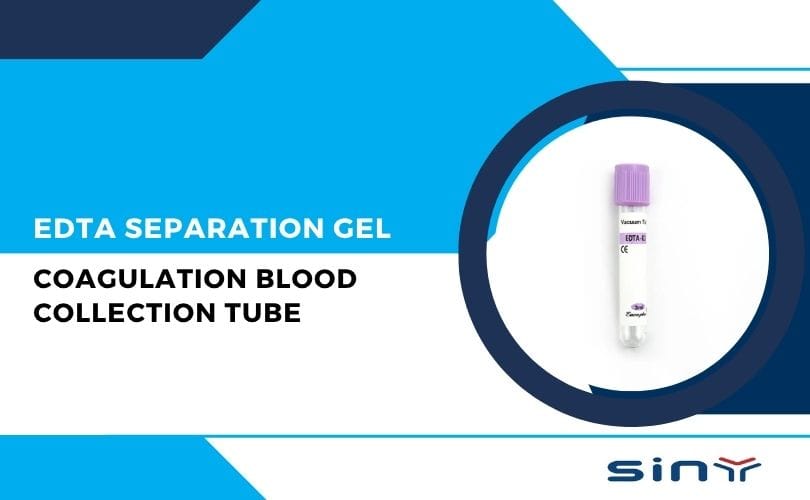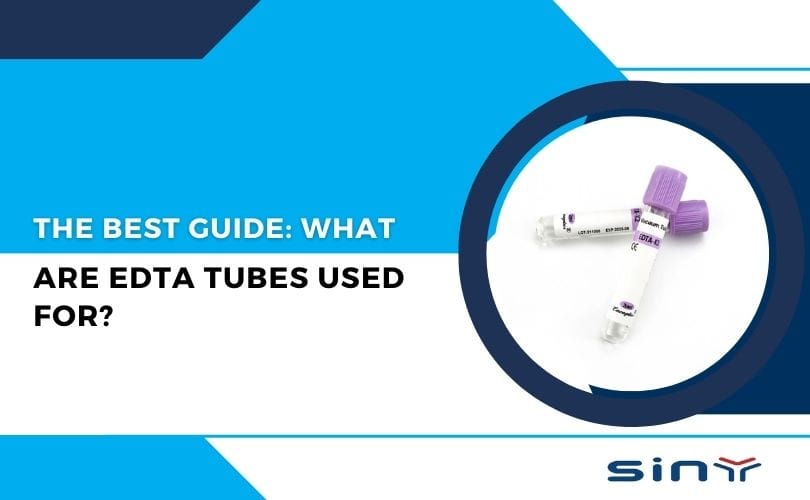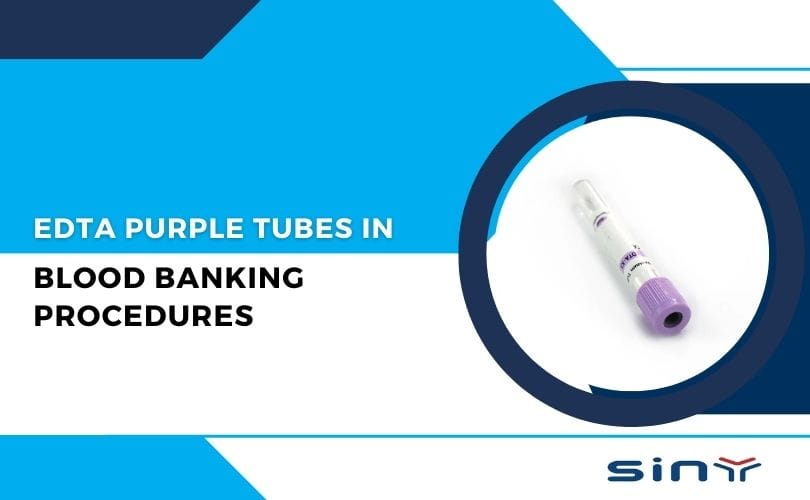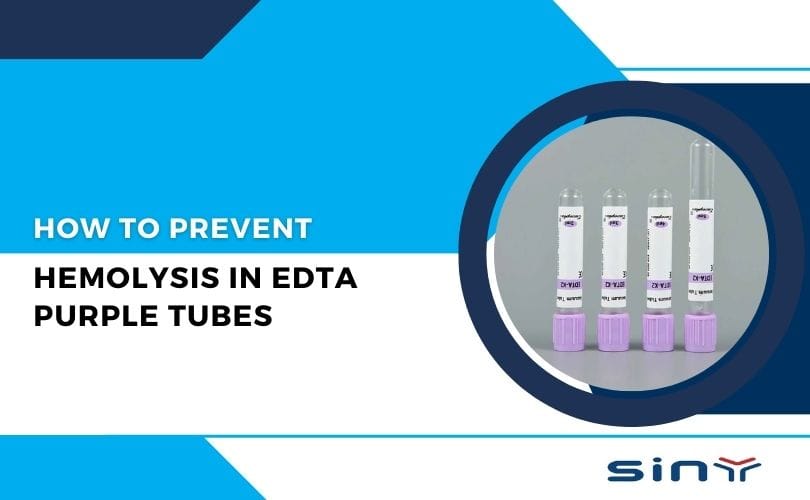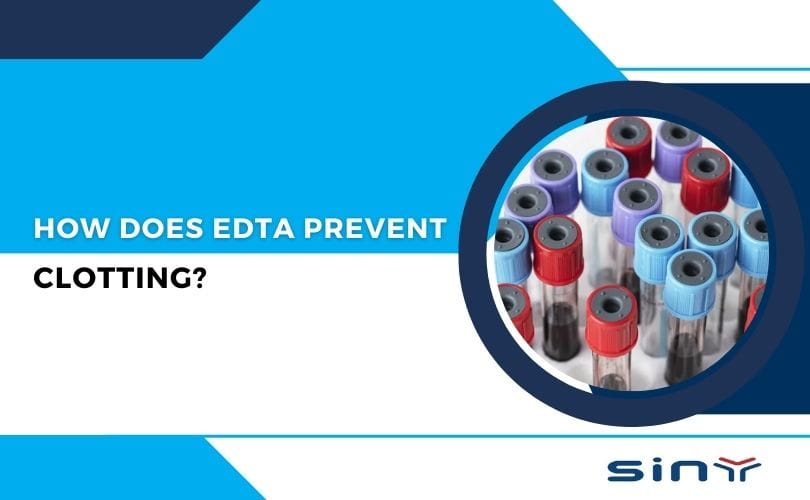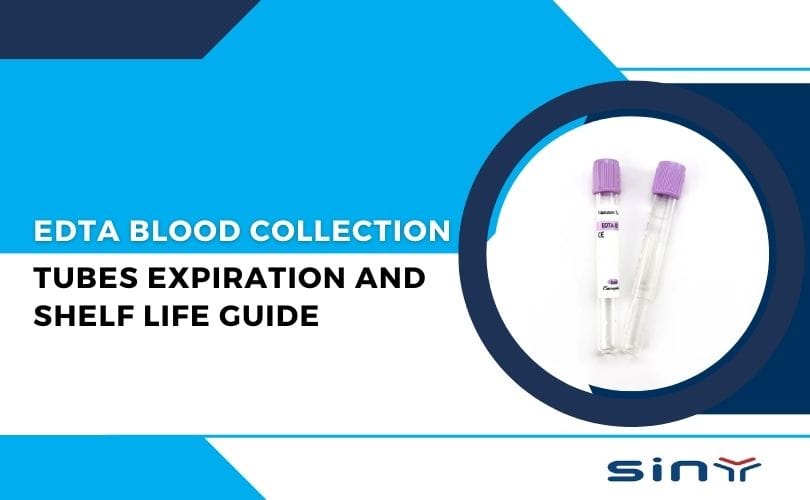Blood collection tubes are essential tools in modern medical diagnostics, enabling healthcare professionals to gather and analyze blood samples efficiently. Among these, EDTA Separation Gel Coagulation Blood Collection Tubes stand out for their unique design and functionality. These tubes are widely used in laboratories and hospitals to ensure accurate and reliable test results. This blog delves into the intricacies of EDTA separation gel coagulation tubes, exploring their purpose, benefits, and applications.
What is an EDTA Separation Gel Coagulation Blood Collection Tube?
An EDTA Separation Gel Coagulation Blood Collection Tube is a specialized tube designed to collect and preserve blood samples for diagnostic testing. The tube contains Ethylenediaminetetraacetic acid (EDTA), an anticoagulant that prevents blood clotting, and a separation gel that facilitates the separation of plasma or serum from blood cells.
The separation gel is a thixotropic material that forms a stable barrier between the liquid and cellular components during centrifugation. This ensures that the plasma or serum remains uncontaminated, making it ideal for various laboratory tests.
For more details on EDTA tubes, visit our product page: EDTA Tubes for Blood Collection.
Composition Breakdown:
| Component | Function | Description |
|---|---|---|
| EDTA (K2 or K3) | Anticoagulant | Binds calcium ions to prevent clotting, preserving whole blood. |
| Separation Gel | Physical Barrier | Moves between plasma/serum and cells during centrifugation to isolate components. |
| Tube Material (PET/Glass) | Container | Provides a sterile, non-reactive environment for sample stability. |
| Additives (Optional) | Enhancers | Improve clotting or stability depending on testing needs. |
EDTA is the heart of this system, effectively binding calcium to stop the coagulation cascade. You can learn more about how EDTA works from EDTA Tube’s educational page.
How the EDTA Separation Gel Coagulation Tube Works
Let’s break down the working process step-by-step:
Blood Collection:
Blood is drawn into the sterile EDTA tube using a standard venipuncture technique.Mixing:
Gentle inversion of the tube ensures EDTA disperses evenly, preventing micro-clots.Centrifugation:
Once the sample is centrifuged, the separation gel moves and forms a stable barrier between serum and cells.Sample Isolation:
The serum or plasma at the top layer is clean, ready for biochemical or immunological analysis.
This mechanism is vital in maintaining sample integrity, especially for delayed testing or transportation.
For visual reference, check out educational videos from SINY Medical’s YouTube channel demonstrating the process.
What Makes Separation Gel Important in Coagulation Tubes
The separation gel inside these tubes isn’t just filler—it’s an essential element for clean sample separation. When a collected sample is centrifuged, the gel migrates and forms a stable barrier between the serum (or plasma) and the clot (or cells).
This barrier prevents recontamination, ensuring that serum or plasma remains pure for testing. Such precision is critical for biochemistry, immunology, and serological testing, where even minor contamination can alter results.
If you’re looking for high-quality options, explore EDTA and Separation Gel Tubes at EDTA Tube’s official store.
Advantages of Using Separation Gel Coagulation Tubes
Using EDTA Separation Gel Coagulation Tubes ensures high-quality test results. Let’s explore why they’re preferred:
Stable Barrier Formation: Keeps serum or plasma uncontaminated.
Enhanced Sample Integrity: Minimizes hemolysis and cellular interference.
Reduced Processing Time: Eliminates manual serum transfer.
Compatibility: Suitable for most biochemical and immunological analyzers.
Extended Storage Stability: Samples remain usable for longer durations.
These benefits have made them standard in modern laboratories. For certified options, visit SINY Medical’s EDTA Tubes Page.
Quality and Manufacturing Standards
Manufacturers like EDTA Tube and SINY Medical follow international quality standards (CE, ISO, and FDA) to ensure accuracy, sterility, and reliability.
Their production process includes:
Automated assembly lines to prevent contamination.
Vacuum precision technology to ensure consistent sample volume.
Medical-grade PET or glass material for chemical stability.
Rigorous QC testing for coagulation and separation performance.
For instance, the SINY Wholesale Lavender Cap K2/K3 Tubes are produced under strict quality checks ensuring precise anticoagulant concentration and shelf stability.
Comparison: EDTA vs Serum Separator Tubes
| Feature | EDTA Tube | Serum Separator Tube |
|---|---|---|
| Additive | K2 or K3 EDTA | Clot activator + Separation Gel |
| Use | Plasma-based analysis | Serum-based analysis |
| Centrifugation Result | Plasma (with clotting factors) | Serum (without clotting factors) |
| Primary Tests | Hematology, CBC, Blood film | Biochemistry, Serology |
| Color Cap | Lavender or Purple | Yellow or Red |
Both are vital in diagnostics, but EDTA Separation Gel Coagulation Tubes uniquely combine anticoagulation and serum separation—a dual feature enhancing precision and efficiency.
Why Choose Certified EDTA Tubes?
Choosing certified and approved tubes isn’t just about compliance—it’s about patient safety and result accuracy. Poor-quality tubes may lead to:
Inconsistent clotting.
Serum contamination.
Sample degradation.
To avoid such risks, rely on reputable manufacturers like EDTA Tube, known for their innovative designs and quality control.
Summary
The EDTA Separation Gel Coagulation Blood Collection Tube stands as a pillar of modern diagnostic science. By combining the anticoagulant power of EDTA with the precision of separation gel technology, it delivers accurate, clean, and stable samples—a must for any reliable clinical or research result.
From the meticulous manufacturing standards of EDTA Tube to the innovative product range of SINY Medical, these tubes continue to transform the way laboratories handle and preserve blood samples worldwide.
FAQs
1. What is the purpose of the separation gel in EDTA tubes?
It acts as a physical barrier during centrifugation to separate plasma or serum from blood cells, ensuring uncontaminated samples for analysis.
2. Can EDTA Separation Gel Tubes be used for all blood tests?
Not all tests. They’re mainly used for biochemical, serological, and immunological assays but not for coagulation studies where calcium levels need to remain unbound.
3. What is the difference between K2 and K3 EDTA tubes?
K2 EDTA is used for automated hematology, while K3 EDTA is common for manual testing methods.
4. How long can samples in EDTA Separation Gel Tubes be stored?
When refrigerated, samples remain stable for up to 72 hours, depending on the analyte.
5. Where can I buy certified EDTA tubes online?
You can order directly from EDTA Tube’s Official Website or SINY Medical

